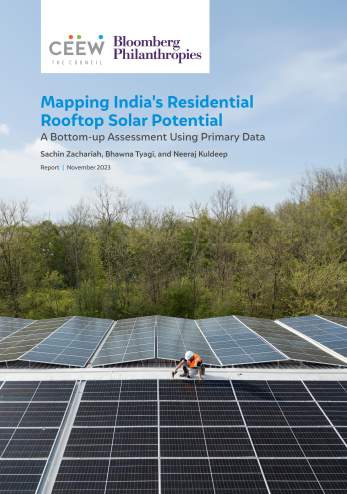Report
Enhancing India’s Milk and Meat Production: Is Hydroponics Green Fodder the Answer?
Market Opportunity Analysis
Wase Khalid, Shruti Jindal, Abhishek Jain, Richa Ahuja
June 2021 | Energy Transitions, Sustainable Livelihoods
Suggested Citation: Khalid, Wase, Shruti Jindal, Abhishek Jain, Richa Ahuja. 2021. Enhancing India’s Milk and Meat Production: Is Hydroponics Green Fodder the Probable Answer - Market Opportunity Analysis. New Delhi: Council on Energy, Environment and Water.
Overview
This Powering Livelihoods market research report provides insights on the market potential for hydroponics fodder units - a vertical farming technology to manufacture green fodder. The usage of solar power provides a unique value proposition and reliability for these 100 per cent renewable energy-based products. The report highlights key geographies suitable for the sale of hydroponics fodder units, supporting policy landscape, comparative analysis and business models. It captures the serviceable market size and major market segments that entrepreneurs can target for enhancing milk and meat production in India.
Read the market research report for Solarvastra.
Powering Livelihoods, a USD 3 million (INR 21 crore) initiative by CEEW and Villgro, is mainstreaming clean energy-based solutions in India’s rural economy. It provides capital, technical, and sectoral growth support to help social enterprises deploy a large number of clean energy-based livelihood solutions in a gender-inclusive manner.
Key Highlights
- The total available market (TAM) for small-scale hydroponic fodder (SSHF) units is USD 3.2 billion (INR 23,905 crore). The total annual market for green fodder is USD 4.2 billion (INR 31,555 crore).
- The serviceable available market (SAM) is USD 2.1 billion (INR 15,965 crore). More than 4.6 million SSHF units could operate across India, impacting over 16 million livestock farmers. The serviceable annual market for green fodder is USD 2.8 billion (INR 21,071 crore).
- The SAM has two parts: a USD 1 .7 billion (INR 12, 532 crore) market for more than 3.6 million SSHF units with the potential to improve milk production and a USD 457.7 million (INR 3,433 crore) market for over 1.0 million SSHF units with the potential to boost meat production.
- Uttar Pradesh, Rajasthan, Gujarat, Maharashtra, Karnataka, Andhra Pradesh, Tamil Nadu, Madhya Pradesh, Telangana and Bihar account for 82.3 per cent of the serviceable available market.
- Large scale hydroponic fodder units (or bulk deployment of SSHF units) can help create employment opportunities, along with plugging fodder deficit. Entrepreneurs can target women self-help groups (SHG) and dairy cooperatives and other local livelihood groups to deploy these units.
- Entrepreneurs can deploy SSHF units using two business models: direct sales or fodder-as-a-service. Asset financing partnerships and targeted vernacular sales efforts are required to scale up direct sales. Fodder-as-a-service model requires capital investment, as well as a dedicated team to run the manufacturing facility and carry out marketing activities.
High potential regions to deploy small-scale hydroponic fodder units

Source: Author's analysis
The total serviceable market for Hydroponic fodder units is USD 2.1 billion (INR 15,965 crore). They have the potential to deploy 3.6 million hydroponic fodder units to improve milk production and 1.0 million hydroponic fodder units to boost meat production.







